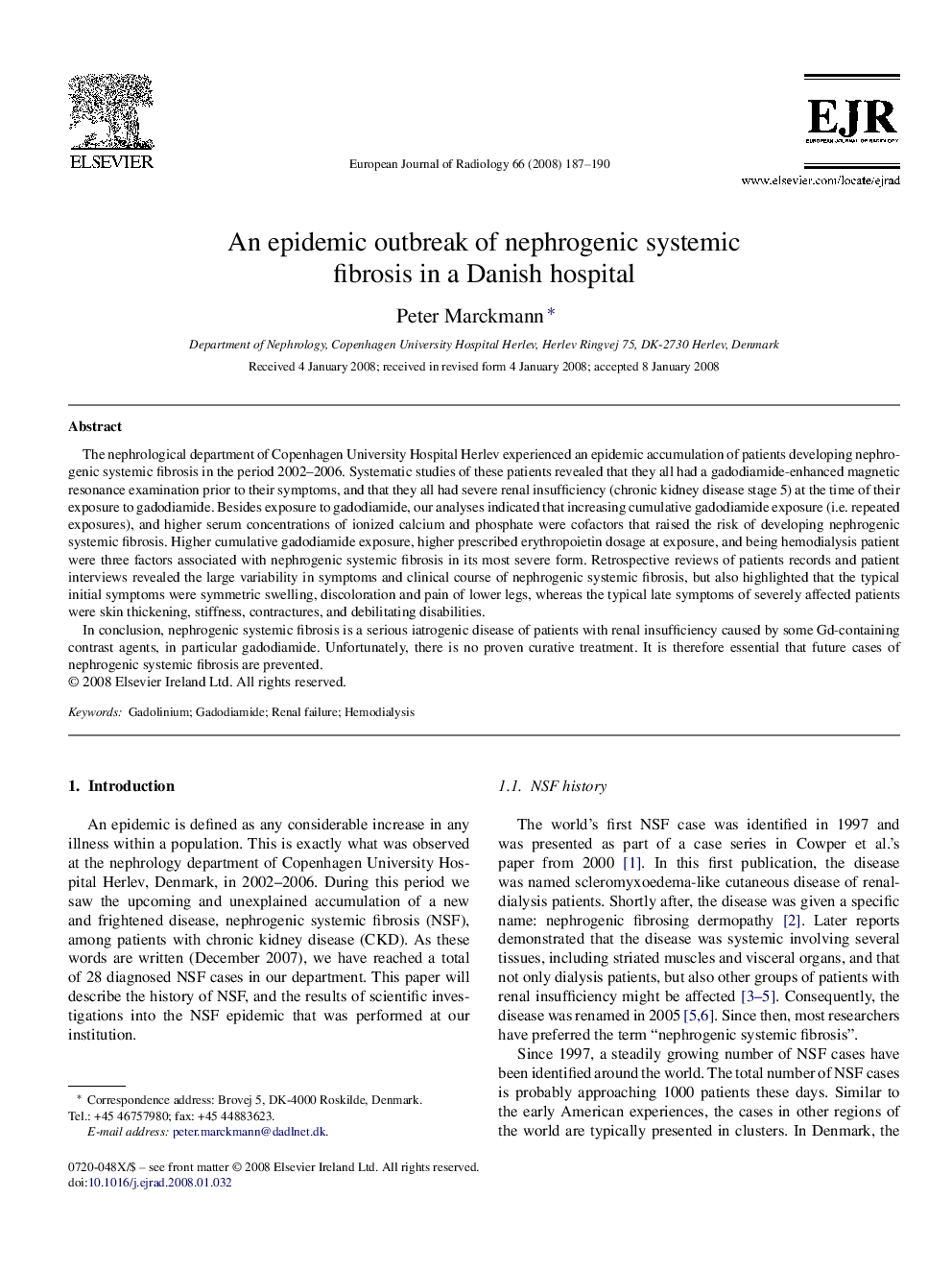| Article ID | Journal | Published Year | Pages | File Type |
|---|---|---|---|---|
| 4228011 | European Journal of Radiology | 2008 | 4 Pages |
The nephrological department of Copenhagen University Hospital Herlev experienced an epidemic accumulation of patients developing nephrogenic systemic fibrosis in the period 2002–2006. Systematic studies of these patients revealed that they all had a gadodiamide-enhanced magnetic resonance examination prior to their symptoms, and that they all had severe renal insufficiency (chronic kidney disease stage 5) at the time of their exposure to gadodiamide. Besides exposure to gadodiamide, our analyses indicated that increasing cumulative gadodiamide exposure (i.e. repeated exposures), and higher serum concentrations of ionized calcium and phosphate were cofactors that raised the risk of developing nephrogenic systemic fibrosis. Higher cumulative gadodiamide exposure, higher prescribed erythropoietin dosage at exposure, and being hemodialysis patient were three factors associated with nephrogenic systemic fibrosis in its most severe form. Retrospective reviews of patients records and patient interviews revealed the large variability in symptoms and clinical course of nephrogenic systemic fibrosis, but also highlighted that the typical initial symptoms were symmetric swelling, discoloration and pain of lower legs, whereas the typical late symptoms of severely affected patients were skin thickening, stiffness, contractures, and debilitating disabilities.In conclusion, nephrogenic systemic fibrosis is a serious iatrogenic disease of patients with renal insufficiency caused by some Gd-containing contrast agents, in particular gadodiamide. Unfortunately, there is no proven curative treatment. It is therefore essential that future cases of nephrogenic systemic fibrosis are prevented.
